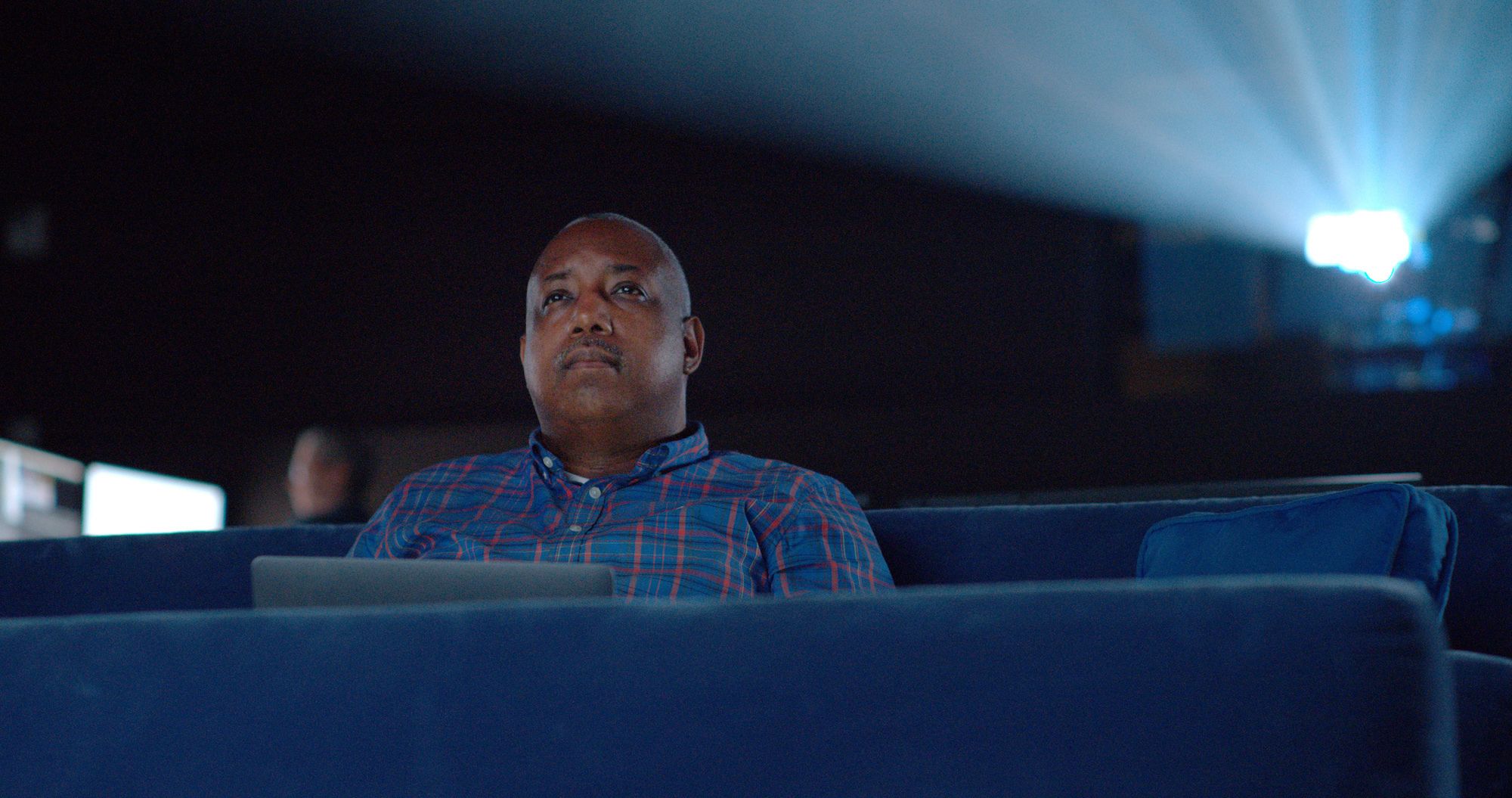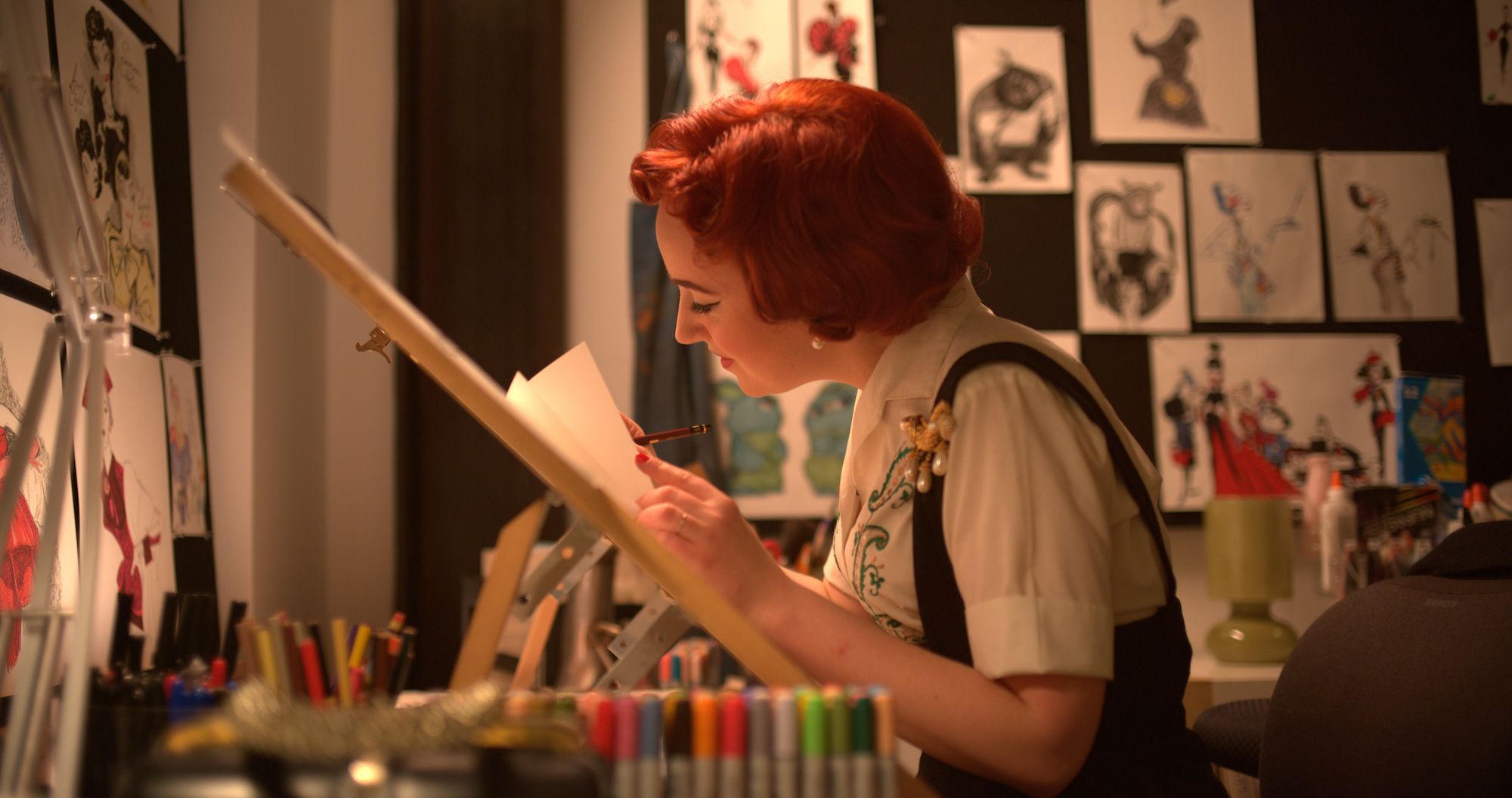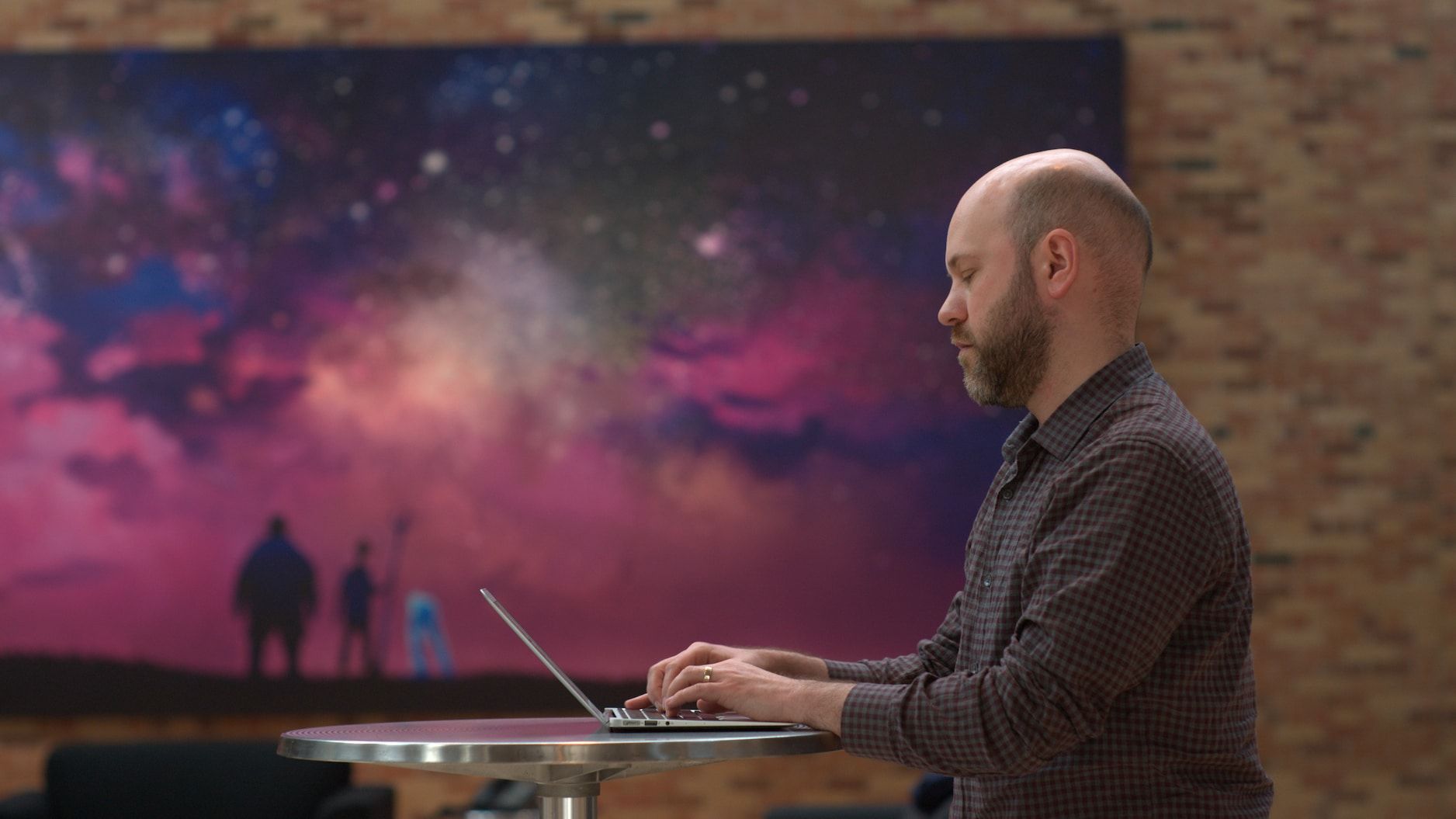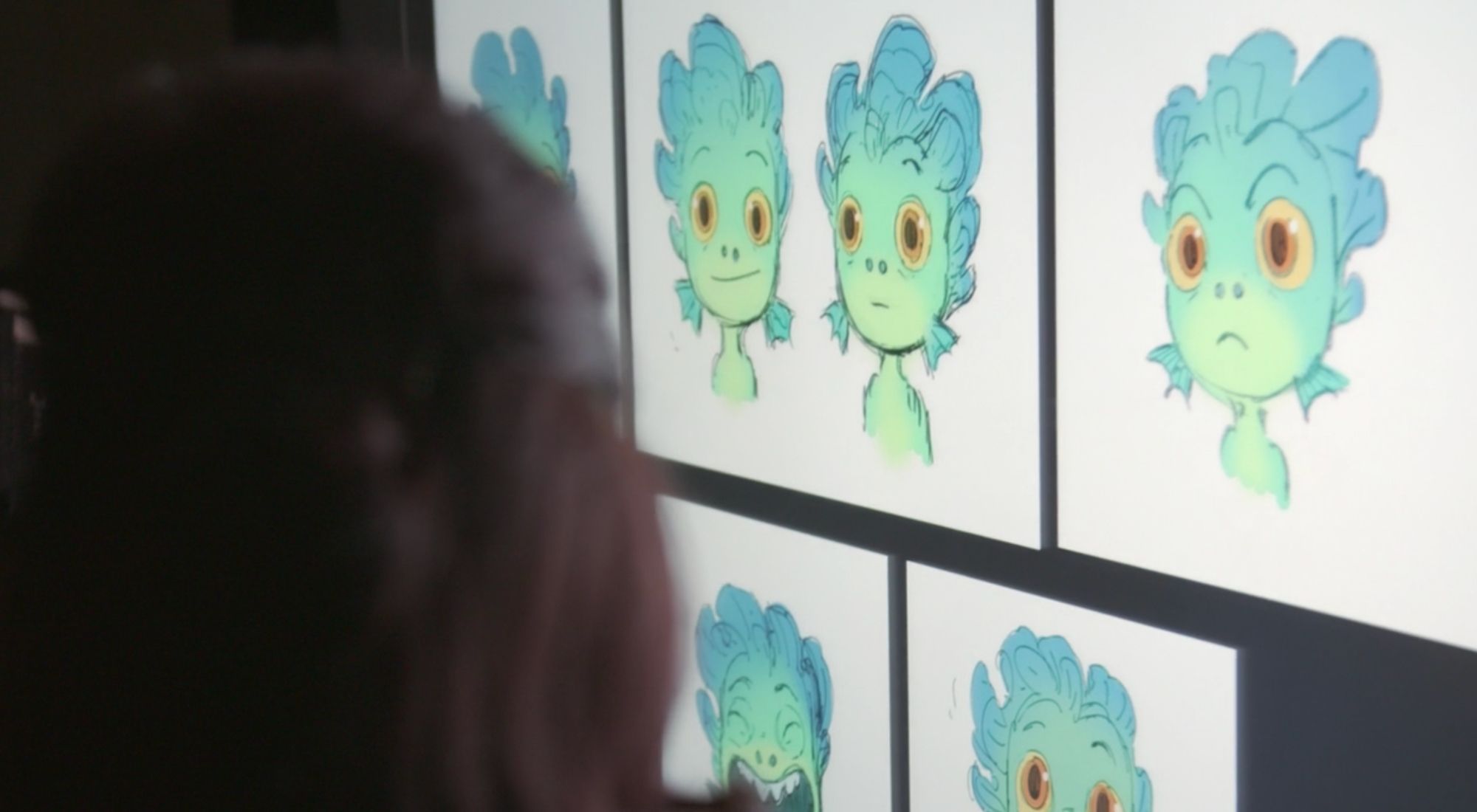Inside Pixar is the miraculous new series of mini-documentaries on Disney+ that delve into the world of the famous animation studio and the people that make its short films and features truly come to life. Each installment focuses on one person at Pixar for the first batch, which is subtitled “Inspired” – script supervisor Jessica Heidt developed a revolutionary program to track the gender imbalance of Pixar screenplays, writer/director Dan Scanlon plumbed an emotional moment from his past to craft the story for Onward, etc. – to see how they tap into that creativity that is required to get one of these projects off the ground. It really is an astounding series (you can read our review here) and does much to demystify Pixar in a way that still makes it seem like the most magical place on earth.
We talked to directors Erica Milsom and Tony Kaplan, who are Pixar vets (you’ve undoubtedly watched countless documentaries of theirs on home video releases), about what went into the process, how they chose their subjects, the culture of Pixar 2.0, and how they snuck in the sea monster from 2021’s Luca into the shorts.
Collider: You obviously have this amazing background in producing documentaries for home video releases and things like that. What was the top-level objective for these shorts, compared to what you guys have done before?
KAPLAN: Well, I think we often would focus on the team effect. This idea that none of these movies are made by an auteur, right? There's never one person responsible for a movie. And that was something we were always trying to get across when we were doing any making-of behind the scenes things for home entertainment. This was a big shift away towards the individual. Talking about how one person has a real effect on the way a movie looks or sounds or feels, or how the Pixar community feels and looks.
MILSOM: I think in this series we want... It's so funny because we have always been show by show. That's been our mandate, is doing it for each film. It's an amazing mandate — we've had a great job. But then, being able to say we're going to tell the story of the studio and we're going to tell the story of the creative process here and be able to detach it from a particular film, because I do think Pixar has a powerful culture and it has a powerful sense of individual... The people who come here and create these films have a lot of power in their own identity.
This “Inspired” collection that's coming, it's the first one out, and then we have another one called “Portraits.” Those were very much about each individual person that we could tell some stories about. The whole studio is full of interesting people. So that was the hard part I think was trying to cast it initially, right Tony? Just trying to say, okay, Inspired. Which five stories are we going to tell in this first batch, in this first season?
How did you decide on which people would be profiled?
KAPLAN: I think so much of this is getting at this idea that these ideas don't come just out of someone's head fully formed. These were people who had been struggling with some creative thing, trying to get something across, maybe something that was not even clearly articulable when they start. You what I mean?
But somehow that has to become an idea that becomes a movie that gets on screen or is from the ideas from the movie that ends up affecting it, which is really Jessica Heidt, which is the one who figured out a way to determine how many male and female voices were in each film. Ultimately all these people were trying to get something on screen and they were able to articulate that process to us. I mean, it seemed like maybe one of the keys here was vulnerability. In order to do something interesting and meaningful and resonant with people, you had to be willing to open your heart. And we got lucky. We had people who were willing, not only to do that, to put something on screen, but also to do it with us, and talk about that process.
MILSOM: And I really wanted there to be a variety of voices in that and a variety of disciplines. I feel like when you look at Disney+, the audience is people from all different backgrounds, all different interests, that drive them to these stories. And so I feel like when we came to it, we have Dan who's a director and has an amazing story. We knew that story of Dan Scanlon. That's a wonderful story. And to be able to really hit the personal and individual nature of that. Also, with Deanna, we watched her work forever, but Deanna had given a talk at, I think South by Southwest, with a couple of other production designers. And I got a hold of that keynote at some point. And I was like, oh, this is amazing. And her whole philosophy of get messy, in contrast with her amazingly pulled together persona, I felt was really powerful. This idea that inspiration and being inspired to create is a process of shaking yourself up and being not quite sure what you're doing.
And then, yes. I mean, I think in this moment when like Jessica’s count... It was really weird, but I woke up this morning, I was like, counting is the most important thing that's happening in America right now. Someone keeping good count. And her job is, you can look at it from the outside. And we did initially, we were like, wow, that's really administrative. It's going to be hard. It's creative, but there's also just a lot of paperwork that is intrinsic to that job. And so, how to dramatize that was really something that we thought about all through this. And for that one, trying to make sure that we also made the statistics feel visceral. That we made the story we're telling about administration and stats, which I feel like you see stats, you see numbers all the time. They stop meaning something. So, how to make those things visceral. We interviewed a ton of people for all these. There's 20 pieces.
KAPLAN: Because Erica and I've been there for a long time, 15, 16 years now. But, there are still things that we, as we went into this project that I didn't 100 percent understand about the way Pixar makes movies. But that was a great guide. It was like we, watching this, talking to people for years and years and years, didn't understand it was probably likely that the average viewer probably didn't know that either. So that was a really good way to choose which people we wanted to talk to them, and which topics we covered.
MILSOM: And then also just Kemp. I mean, knowing that barbershop story, gave it such a... You're like oh, this'll be an interesting thing to shoot. Number one, it'll be visually really exciting. And then it just was so helpful. It made such a difference in helping Soul, don't you think, Tony?
KAPLAN: Yeah. This idea that sometimes there's just one pivot moment in a film's production process where all of a sudden all the pieces come into place. For them, in some ways that character Joe came into place, the minute they put him in the barbershop, was really what happened. So, it was great to be there for this fulcrum moment there.
Well, that's the other thing that I thought was really inspiring and wonderful about these shorts is that you actually go with the artists either to their hometown — or you followed Deanna to Italy. Was that always something that you guys had intended to do, or was that something that just came up in the process of putting these together?
MILSOM: I think we intended it right from the beginning, right Tony? I mean, as soon as we were like, it's about their personal stories. We were like, we're going to be in their personal lives. It was actually one of the things that in interviewing people, we'd be like, how do you feel about being visited?
KAPLAN: Dan Scanlon was so excited to have us there because he said "this was my dream growing up. My dream was always to make movies in Clawson, Michigan with my friends." And so it was great. He was in it. He really loved participating. We have a whole other movie that we could put together just about him in Clawson, but it had very little bearing on Onward. We were trying to keep it tight.
What's interesting too, is the length of these episodes. You can get through the first batch in about an hour. Was that always your goal or was there ever talk of making them a little bit longer or turning it into a feature?
KAPLAN: We went back and forth a little bit about this. We were excited by one aspect of this is that, which is we were producing without any broadcast structure. I mean, they don't have to fit into a 22 minute, half hour. They don't have to be a part of a broadcast thing. They can be as long as they need to be, as long as they can sustain and hold attention and have something interesting to stay. So I think moving forward, we're talking about maybe doing some longer ones, but these were just also just to give the breadth and width of... The next group is called Portraits, and it's really about jobs you wouldn't expect exist at a place like Pixar.
So it's this idea of how do we get across this huge breadth of professional life that these people have? Keeping them short was one way to do it.
MILSOM: Yeah, also we pitched 20 episodes and there's only two of us. I mean, there's a crew, but it was a small crew. And we brought on freelancers, but honestly, it was a pretty small group of people who brought this all to life. And, I think for the first year of walking into it, we were like, keep them under 15 was our goal.
Well, if these are ongoing at some point, do you think you're going to chronicle these artists at home, making these movies? Because I mean, there's a little tag at the end of Soul now that says, “made at Pixar and everybody's house.”
MILSOM: Yeah. There's another, you'll see, there's great stuff coming.
KAPLAN: Yeah. There's a whole doc about how they actually did finish Soul at home, which was a huge task. And the fact that they were able to do is unbelievable.
That actually brings me to something I wanted to ask you about, which is showing the sea monster from Luca in Deanna’s segment. I was wondering how that came about.
MILSOM: I had that same question when we were making it. We were like, what do we show? Because Deanna, number one, she is now the character art director. She has a much larger role on Luca. So, in order to really honor her place in the world and what she's working on, we wanted to show it. So we were like, do we release this later? Did we cut two versions of it and all this stuff? And I really think, I don't know what it says about what the studio is willing to release, it was kind of like, it went through, and I think people were like, this is an authentic expression of where Deanna is at. And it's an interesting place to see the creator, the person who conceptualized the way this little sea monster looks, creating this sea monster. And it got through. Yeah. I don't know. It was one of those things where we kept pushing it through. We were like, okay, does that work? We always know years ahead what's happening.
I think that also speaks to, and please tell me if I'm wrong, but the new place that Pixar is at right now, where communication seems to be more open, there's a larger diversity of voices and talent. Was it fun to present this Pixar 2.0 to the world in this way?
MILSOM: I think so. Tony? I mean, I felt like it was so exciting. I think on some level, when people think of Pixar, there were these names that were always the names that came up as the leadership of the place. But there always has been a powerful force in the studio of other names. Other people who've contributed, who've been significant. And I think Pixar 2.0, it was great to be able to say look at this amazing spectrum of people whose ideas are transforming our stories. And, in the case of Jess, our whole studio. And I think that, to me, was a really fun part of starting this. Tony, how did you feel?
KAPLAN: You asked originally how did we choose these people? And part of our, I think Erica and I both holding a hand saying, let's not use our usual suspects. Let's make sure we're showing the real diversity of voices that actually end up making a difference in these films. And so, I think that's maybe a shift.
The other thing that I think the docs capture so well is this Hogwarts feel where the Pixar is this magical place, but it's very everyday. Was that important to you going in? It's not Willy Wonka's chocolate factory, but there is that aspect of it too.
KAPLAN: Yeah. I mean, we've been really fortunate because Erica and I exist as embedded journalists there at Pixar on some level. And so, we get to be in and out of the culture. We are part of it. We do all the things that everyone else there does, eat cereal, et cetera. But we also get to take a step back, and in some ways maybe that's the other, I won't say mandate, but the other thing that we were conscious about is that, it's not just a fun factory. It isn't just Willy Wonka. It's this amazing place where people have craft.
There are a lot of people there who are just craftspeople. And that was one of the things we really wanted to get across, that nobody is there pushing a button and it makes the movie come out. It's this constant push and pull between all of these different forces, a million different decisions that we wanted to make visible. And most of those decisions are invisible. When you're watching a film, it looks like, well that's the film. There we are. That's how it works. But we wanted to make these ideas apparent that might not be apparent, and these people who make these decisions and craft apparent.
The first batch of Inside Pixar docs is currently streaming on Disney+.




